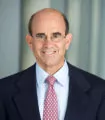On March 27, 2019, a 6-2 majority1 of the United States Supreme Court determined in Lorenzo v. Securities and Exchange Commission that a misstatement claim that does not satisfy the elements set forth in Janus 2 can nevertheless be pursued as a fraudulent scheme claim, thereby upholding the DC Circuit's underlying decision. As a result, defendant Francis V. Lorenzo remains liable for distributing false statements written by his supervisor, even though Lorenzo had argued that he was protected from liability under Janus because he did not "make" the statements himself. The court's decision will likely have important implications, including buttressing the SEC's enforcement of the federal securities laws and encouraging the SEC and private plaintiffs to assert claims not covered by Janus.
Background
As noted in our prior advisories on the case,3 the DC Circuit previously concluded that Lorenzo—who was the director of investment banking at Charles Vista LLC and had sent deceptive emails written by his supervisor to investors knowing that those emails contained false information—did not have "ultimate authority" and was not the "maker" of the statements at issue and therefore could not be held liable under Rule 10b-5(b) pursuant to Janus. The DC Circuit also concluded, however, that Lorenzo had "infringed Section 10(b), Rules 10b-5(a) and (c), and Section 17(a)(1), regardless of whether he was 'maker' of the false statements for purposes of Rule 10b-5(b)." 4
At issue in Lorenzo's appeal of that decision to the Supreme Court, was whether Lorenzo could be charged with a primary violation of 10b-5(a) and (c) as well as Section 17(a)(1) despite not being the "maker" of the misstatements contained in the emails he forwarded to investors.
The Supreme Court's Decision
In a majority opinion written by Justice Breyer, the Supreme Court upheld the DC Circuit's decision, determining that those "who do not 'make' statements . . . but who disseminate false or misleading statements to potential investors with the intent to defraud, can be found to have violated the other parts of Rule 10b-5, subsections (a) and (c), as well as related provisions of the securities laws." In the court's view, this is so "even if the disseminator did not 'make' the statements and consequently falls outside subsection (b)" of Rule 10b-5.
Previously, in Janus, the court had held that the "maker of a statement is the person or entity with ultimate authority over the statement, including its content and whether and how to communicate it." Thus, on the facts of Janus, an investment adviser who had merely participated in the drafting of a false statement "made" by another individual could not be held liable in a private action under subsection (b).
Here, on appeal to the Supreme Court, Lorenzo did not challenge the DC Circuit's finding that he acted with scienter when he sent the at-issue emails to investors. As a result, the Supreme Court observed that it took for granted that Lorenzo had sent the emails with "intent to deceive, manipulate, or defraud" the recipients of those emails even though he was not the author of those emails. Lorenzo, therefore, was unlike other potential actors with only tangential involvement in a dissemination of false information, such as a mailroom clerk. While the Court stated that it would "typically be inappropriate" to impose liability on such actors, it was appropriate to impose liability on Lorenzo because he had more extensive and direct involvement: he "sent false statements directly to investors, invited them to follow up with questions, and did so in his capacity as vice president of an investment banking company."
In reaching its decision, the court also rejected Lorenzo's argument that subsections (a) and (c) of Rule 10b-5 should not reach the conduct at issue because, to hold otherwise would mean that he would be liable for false statements under provisions that do not refer specifically to false statements. The court rejected the premise "that each of th[e] provisions [of Rule 10b-5] should be read as governing different, mutually exclusive, spheres of conduct." Instead, the court and the SEC "have long recognized considerable overlap among the subsections of [Rule 10b-5] and related provisions of the securities laws." Had the court accepted Lorenzo's argument, the court observed that "behavior [like Lorenzo's] . . . though plainly fraudulent, might otherwise fall outside the scope" of the antifraud provisions of the federal securities laws. In fact, "using false representations to induce the purchase of securities," as Lorenzo did, "would seem a paradigmatic example of securities fraud." For the court, there was no reason why either Congress or the SEC would have desired to "disarm enforcement in this way."
Justice Thomas, writing for himself, and Justice Gorsuch, dissented. Justice Thomas argued that applying Rules 10b-5(a) and (c) to conduct like Lorenzo's, as the majority did, would render Janus "a dead letter." The majority countered this by noting that Janus held that an individual did not "make" statements under subsection (b) if the individual "helped draft misstatements issued by a different entity that controlled the statements' content" but said "nothing about . . . the dissemination of false or misleading" statements. Therefore, Janus would consequently remain relevant (and preclude liability) where an individual neither makes nor disseminates false information."
Significance
The Supreme Court has now determined that individuals who disseminate false statements with intent to defraud can be found primarily liable under Rules 10b-5(a) and (c), Section 10(b), and Section 17(a)(1), even if the underlying conduct would constitute secondary activity under Rule 10b-5(b), thereby resolving a circuit court split. Moving forward, the SEC may be able to pursue claims against individuals who disseminate statements they know to be false even though they may not have had any hand in drafting those statements where they can be said to have participated in a fraudulent scheme. Under the court's standard, the SEC will likely continue to pursue anti-fraud charges against individuals who are not "makers" of statements under Janus in a wider range of cases.
The SEC may also seek to test the limits of Lorenzo by pursuing claims against individuals who, like Lorenzo, disseminated untrue statements that they did not draft, but unlike Lorenzo, did not know that the information was false. The pursuit of such claims against other disseminators of statements lacking knowledge would likely prove challenging, however, given that Rules 10b-5(a), (c), and Section 17(a)(1) still require that an individual acted with intent. It is possible that the SEC could nevertheless still seek to pursue such claims under Section 17(a)(3), which requires only a showing of negligence. Meanwhile, while the court did not address whether its decision extends to private securities class actions, private plaintiffs will likely seek to extend Lorenzo to private rights of action under 10b-5(a) and 10b-5(c) against a larger array of individuals involved in disseminating corporate information, such as corporate investor relations personnel.
Footnotes
1 Justice Brett Kavanaugh recused himself after authoring an underlying dissent in Lorenzo v. Securities and Exchange Commission, 872 F.3d 578, 596–602 (DDC Cir. 2017), which noted that pursuant to Janus, and under the rules adopted in numerous circuits, "scheme liability must be based on conduct that goes beyond a defendant's role in preparing mere misstatements or omissions made by others." Id. at 600.
2 Janus Capital Group, Inc. v. First Derivative Traders, 564 U.S. 135 (2011).
3 Supreme Court Hears Argument on SEC's Ability to Pursue Fraudulent Scheme Claims Where the Janus Test Is Not Met;and Supreme Court to Decide Whether the SEC Can Pursue Fraudulent Scheme Claims Where the Janus Test Is Not Met.
4 Lorenzo v. Securities and Exchange Commission, 872 F.3d 578, 588-89 (DDC Cir. 2017).
The content of this article is intended to provide a general guide to the subject matter. Specialist advice should be sought about your specific circumstances.



